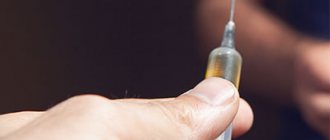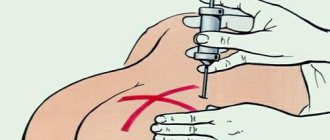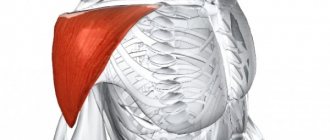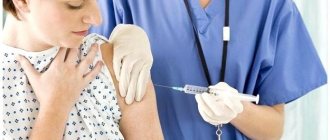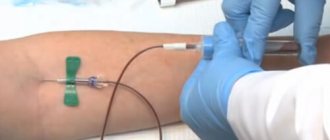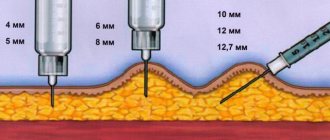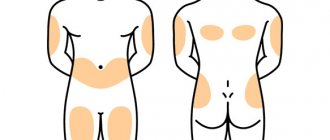A syringe is a general name for instruments that are used in the fields of technology, cooking and medicine. Let's take a closer look at the last option. Medical syringes are necessary for collecting biological fluids, administering medicinal solutions and installing IVs. In practice, several unique types of syringes are used that were developed for specific purposes (for example, the Janet syringe). What do you need to know about the device, on what principle does it work and what rules should be taken into account during the injection?
general characteristics
Most syringes are a hollow cylinder with a special scale on it. A needle is placed on the base of the cylinder, and a piston is connected to the reverse side. It regulates the intensity of administration or withdrawal of fluids through a simple mechanism. The harder and more intense the physician presses on the plunger, the more fluid/biological material will be injected or extracted.
Content:
- general characteristics
- Brief historical background
- Operating principle and design of the tool
- Types of medical syringes
- How to use a syringe correctly
The design and specificity of syringes have evolved from a hollow tube to disposable sterile instruments. Only one thing remained unchanged - the use of a press and a needle (in various variations that depended on time). Nowadays, the most popular are disposable plastic syringes with a stainless steel needle. They are sold in pharmacies and used in specialized medical institutions due to their low cost, sterility, and ease of use. The invention of the first disposable syringe belongs to pharmacist and veterinarian Colin Murdoch. At the time of discovery (1956) he was only 27 years old.
Brief historical background
An interesting fact is that intravenous injections have been carried out since the 17th century, but the invention of syringes dates back only to the 19th century. In 1853, an incredible idea came to two scientists at once - the Scot Alexander Wood and the Frenchman Charles-Gabriel Pravas. Scientists worked independently of each other, and the world community calls this fact an amazing coincidence of circumstances.
Pravasa's syringe consisted of three elements. This is a glass cylinder with a metal frame, a cannula for a tubular needle made of silver or gold, a graduated metal piston made of durite, asbestos or vulcanized rubber. Wood's medical instrument also consisted of a hollow needle and a cylinder, but was used not for surgical purposes, but for hypodermic injections. Wood wanted to alleviate the plight of his own patients who did not tolerate anesthesia well or did not feel its effects at all. He began injecting opiates into the pain points and waiting for the patient's response. The substances quickly spread through the bloodstream and blocked pain, which significantly increased the effectiveness of therapy.
Invention of disposable syringes
New Zealander Colin Murdoch was able to bring the idea of a disposable syringe to life. He received the profession of a pharmacist, but decided to work as a veterinarian for some time. Murdoch faced the problem of safe injections for animals. Reusable glass devices were fraught with many dangers, which a New Zealander was able to neutralize in 1956. It was during this time that he patented the first disposable medical syringe, which is still used throughout the world. Murdoch's invention remains one of the most used medical items, with batches numbering in the billions.
Modern science is trying to invent a truly disposable syringe, physically depriving the design of the possibility of reuse. The demand and importance of the task is due to the rapid spread of HIV and other infections that threaten human life. Some scientists have made significant progress in research and even received patents for existing developments. But there is still no reliable and cost-effective solution to the issue.
In many countries around the world, charitable organizations exchange syringes, recycle them, and conduct educational work among the population to reduce the spread of infections.
Injection Syringes history and types
According to the World Health Organization, the average person encounters such an object as a syringe 10 times a year - receiving injections or diagnostic punctures, and some, such as those suffering from diabetes, use syringes every day. Thus, there is not a person on planet Earth who does not know what a syringe is. But what exactly do we know about syringes? Let's try to bring our knowledge together.
The name "spray" comes from the German word "spritzen", to spray. A syringe is a tool used in medicine, technology, and cooking for introducing and removing various liquids or gases using piston pressure.
A medical syringe is an instrument that is used for intramuscular, intravenous, subcutaneous or other injections, diagnostic punctures or suction of pathological contents from the cavities of the human body.
Stories about the development of medicine usually begin with Hippocrates, a physician who lived at the end of the 5th century. BC. in Greece. Our story about the invention and improvement of syringes will not be an exception, for this worthy husband, in addition to other, as we would now say, scientific developments, dealt with the issues of introducing drugs into the human body, bypassing the digestive tract, that is, by injection. To do this, Hippocrates used a pig's bladder with a hollow tube attached to it, which he inserted into a cut in the vein. The design, apparently, was more like an enema than a syringe, but a start had been made. The patients tolerated the treatment well, which prompted humanity to improve such devices.
In the 17th century French physicist and mathematician Blaise Pascal invented a device consisting of a cylinder, piston and needle. The principle of operation was that when a needle was placed in a liquid and the piston was raised, a vacuum was created between the surface of the liquid and the instrument, and since the liquid was affected by an atmospheric phenomenon, it rose into the cavity of the cylinder. The device was called the Pascal injector, but, unfortunately, the medical community of that time did not appreciate the depth of the idea, and for almost two centuries the discovery did not find practical application. Only in the mid-nineteenth century, the secretary of the Royal College of Physicians of Edinburgh, Alexander Wood, remembered the injector and, based on it, created a syringe for parenteral administration of drugs under the skin. Almost simultaneously with the Scotsman Wood, a similar device was designed by the French doctor Charles Gabriel Pravac. The syringes of Wood and Pravac had some differences, but subsequently both came to a single technical solution and in 1853 they invented a syringe and needle for intravenous and intramuscular injections. The syringe of that time was a 1 ml glass cylinder with a hard rubber frame and a leather piston. The invention quickly gained popularity and brought medicine to a new level, because provided a new way of administering drugs. Treatment has become more accessible and effective.
And at the same time, society faced new problems.
Holmes took a bottle from the fireplace and took out a hypodermic syringe from a neat morocco toilette case. With nervous long white fingers, he secured the needle in the syringe and rolled up the cuff of his left sleeve.
Arthur Conan Doyle. Sign of four
Of course, the genius detective’s addiction to harmful substances requires full condemnation. However, let us pay special attention to the instrument that Holmes so skillfully manipulates. The novel was written in 1890, so it is safe to assume that it is about the Pravac syringe. As stated by the inventors, the syringe is accessible, but requires certain storage conditions (Holmes keeps it handy, on the mantelpiece, but in a case to avoid breakage). The syringe is also extremely easy to use (Holmes uses it at any time of the day or night, and preliminary preparation consists only of rolling up the sleeve). But what about the safety of use? And we’re not even talking about the fact that the availability of syringes contributed to the indiscriminate use of morphine as an analgesic, but also that the syringe design proposed at that time (silver needles, piston made of asbestos or vulcanized rubber) quickly wore out and, most importantly, poorly sterilized. History is silent about how exactly the detective from Baker Street disinfected his syringe, whether he did it himself or entrusted it to the venerable Mrs. Hudson. However, it is known that the issues of disinfection and sterilization of syringes were the vector for their further improvement.
In 1884, French glassblower Fournier created the one-piece glass syringe. Its development was purchased, and since 1894, parenteral methods of drug administration have spread everywhere. This was a real breakthrough in medicine, which, among other things, caused the rapid development of pharmacology - new forms of drugs for intravenous or intramuscular use began to be produced.
The all-glass Luer tolerated boiling sterilization well when disassembled, but the disadvantage was its fragility, especially the tip.
In 1906, a new type of syringe appeared - “Record”, which was a graduated glass cylinder sealed at both ends with metal rings, with a metal piston and rubber rings for sealing. Syringes were used only after sterilization by boiling in distilled water for 40-50 minutes. The needles for such syringes were sterilized in a soda solution; a special wire, a mandrel, was inserted into the needle channel and boiled for 15-20 minutes. Repeated boiling caused the needles to become dull and the injection procedure became painful. However, the hepatitis causative agent could persist even after boiling if the blood was not removed from the needle. Therefore, immediately after use, both syringes and needles were washed and kept in a heated solution of magnesium sulfate or hydrogen peroxide, then mechanically cleaned and sterilized. Sterilized syringes and needles were stored in special containers.
As you can see, the procedure was multi-part, lengthy and required care and precision from the medical staff. However, it was not a 100% guarantee of protection against bloodborne infections.
Therefore, the next stage in the evolution of syringes was the transition to “disposability”.
In 1949, American Arthur Smith patented disposable glass syringes, and in 1956, New Zealander Colin Mourdoch patented a disposable plastic syringe. Thanks to the development of polymer chemistry, the models turned out to be very cheap and therefore generally available. And convenient - there is no need for disinfection, pre-sterilization cleaning and sterilization of syringes and needles.
In 1961, industrial production of plastic disposable syringes was launched, which brought the slogan “Inject and forget” to life.
In the Soviet Union, disposable syringes appeared en masse during the 1980 Olympics. They were given to doctors under strict reporting, and a year later the syringes disappeared again. It was only in the 90s that the plastic disposable syringe ceased to be a curiosity.
However, we have to admit that a disposable syringe can be used repeatedly, if desired. This trend is especially dangerous in high-risk environments, for example, among groups with an increased incidence of bloodborne infections. In connection with this, the current vector for improving syringes is the creation of models that, in principle, cannot be reused. WHO recommends switching to third generation syringes - self-locking and self-destructing. In the first case, after administering the drug, the piston is blocked, and by the reverse stroke of the piston, the needle is pulled into the cylinder. An auto-disable syringe has built-in blades that destroy the barrel as the drug is injected.
Perhaps in the future scientists will come up with an electronic syringe that works on Wi-Fi or something similar. Fiction, would you say? No more than what a doctor of the Napoleonic army would have seen in a Record brand syringe.
But that's in the future. What is happening in the syringe market now?
A modern syringe is a hollow graduated cylinder with an open end into which a piston with a rod is inserted, and with a cone at the other end to which a needle is attached. It seems simple, but today there are many variations. Types of syringes differ according to:
- Purpose;
- Dimensions (cylinder volume);
- Constructions;
- Number of uses.
By purpose:
- Injection syringes – disposable and reusable.
Disposable. Two- and three-component. The material of manufacture is polypropylene, polystyrene and a copolymer of styrene and acrylonitrile, the piston seal is made of natural high-quality rubber or silicone rubber. Minimal lubrication of the inner surface of the cylinder and piston is allowed.
Reusable - “Record” and “Luer”. "Luer". Volume from 2 to 100 ml. glass case. The piston is hollow, with a head. Used for punctures and internal infusions. Sterilization is possible. "Record". Volume from 2 to 20 ml. A glass cylinder with a metal tip and a cone for inserting needles at one end, and a metal ring at the other. The rod, piston and head are metal. The metal cap, which is placed through the slot on it onto the rod and onto the metal ring of the syringe barrel, is secured by turning. The disadvantage of the Record syringe is the heterogeneity of the materials that make up the syringe. Different expansion when heating metal, glass and glue that connects the metal to the glass can lead to a violation of the tightness of the connection between the cylinder and the tip and leakage of the solution. These days it is practically not used.
- Insulin syringes. Volume 1 ml. School of divisions on the cylinder not only in ml, but also in units (U). A standard syringe is marked in increments of 1 unit, for children - 0.5 or 0.25 units. The 40 unit marking has practically gone out of use. The needle is thin and quite short, can be built-in or removable. When used, the formation of a skin fold and pressure when administering the drug are not required. It is considered disposable, but practically can be used many times until the needle becomes dull.
- Syringe tube. It is used for a single administration of the drug, already contains a dose, is sterile and sealed.
- Syringe pen. Used to administer insulin. Consists of a body, a removable needle, a piston mechanism, and a cartridge with insulin. Outwardly similar to a regular pen, the needle is thin, there is a dosing mechanism, and the cartridge is easy to replace. Storage temperature – 18-26 degrees.
- Carpule syringes. They are used primarily in dentistry for anesthesia. Thin needle, ampoule. Reusable and disposable.
- Syringe Janet. Volume 100, 150 ml. The cylinder is glass, the tip, rod, piston and head are metal. The metal ring has metal arcs that make it easier to insert the piston into the cylinder and use the syringe. It is used for washing cavities or suctioning liquids, for intraperitoneal, intravenous or intratracheal infusions.
This is interesting. In the film “Prisoner of the Caucasus,” Byvaloy (Morgunov) is given an injection with a Zhane syringe.
- Special purpose syringes - otorhinolaryngological (Brünings syringe, volume 2 ml); for intralaryngeal infusions; gynecological for intrauterine infusions, volume 2 and 5 ml; “Record” syringe with a tee nozzle, used for continuous infusion or suction. Features - special tips, the presence of a ring, like a Janet syringe, an elongated head.
- Syringe flask. Used for radiopaque procedures. Made of plastic.
- Syringe gun. Volume up to 5 ml. The design allows you to administer the medicine yourself quickly and painlessly by pressing a special trigger.
- Syringe dart. It is used in veterinary medicine to temporarily euthanize animals or administer medicine remotely, and is used in special guns instead of cartridges.
By cylinder volume:
- Up to 1 ml. Used for vaccinations, intradermal tests, administration of drugs in endocrinology, phthisiology.
- From 2 to 22 ml. Used for injections - subcutaneous (up to 3 ml), intramuscular (up to 10 ml), intravenous (up to 22 ml).
- From 30 to 100 ml. Used for sanitation, aspiration of liquids, administration of nutrient solutions.
Please note that the capacity of a syringe is determined by the volume of water poured out of the syringe, and not drawn into it. When pouring liquid, some amount always remains. The smaller the remainder, the more effectively the drug is used. The residual volume should not be more than 0.07 cubic meters. cm.
To determine the division price of the syringe, you need to find on the cylinder the number closest to the needle cone, indicating the number of milliliters. Determine the number of divisions on the cylinder between this figure and the needle cone and divide the found figure by the number of divisions.
For example, on the cylinder of a syringe with a capacity of 10.0 ml, the number closest to the needle cone is 5. The number of divisions between the cone and the number 5 is 5. Divide 5 by 5 and we get 1.0 ml (division value).
There are syringes for special purposes, which, with a small capacity, have a narrowed and elongated cylinder. Thanks to this, divisions corresponding to 0.01 and 0.02 ml can be applied to it at a large distance from each other. These syringes are used to administer precise doses of insulin, heparin, vaccines, and serums.
This is interesting. Distribution of global sales volume by type of syringe:
Syringes for intramuscular injections (2-6 ml) – 70%.
Syringes up to 1 ml – 20%.
Syringes for intravenous injections – 10%.
Syringes with a volume of more than 30 ml - less than 1%.
By design
Two- and three-component.
A two-component syringe consists of a cylinder and a piston, a three-component syringe consists of a cylinder, a piston and a rubber seal on the piston, which allows the piston to move with less friction. This allows the injection to be done smoothly (that is, painlessly), accurately dosing the drug. In a number of developed countries, 2-component syringes are prohibited for use in medical practice. The more economically developed the country, the larger the market share of 3-component syringes.
According to the method of attaching the needle to the cylinder:
- The needle is non-removable and integrated into the body. Typically with a cylinder volume of up to 1 ml.
- Luer fastening - the needle is put on the syringe. Standard for syringes with a volume of 1-100 ml.
- Luer-Lock fastening - the needle is screwed into the instrument. Used when collecting biomaterial, when introducing the drug into dense tissue, in anesthesiology.
- Catheter-type. Used when feeding through a tube or administering drugs through a catheter.
By cone displacement:
- Concentric - the cone is located in the center of the cylinder. Typically, the syringe volume is 1-11 ml.
- Eccentric - the cone is located on the side of the cylinder. Typically the volume is 22 ml and is used to collect blood from a vein.
By needle length:
Surgical and injection (hollow inside). Selection by caliber and tip type.
- 1 ml – needle 10 x 0.45 or 0.40 mm;
- 2 ml – needle 30 x 0.6 mm;
- 3 ml – needle 30 x 06 mm;
- 5 ml – needle 40 x 0.7 mm;
- 10 ml – needle 40 x 0.8 mm.
- 20 ml – needle 40 x 0.8 mm.
- 50 ml – needle 40 x 1.2 mm.
- Janet syringe 150 ml – 400 x 1.2 mm.
By number of uses:
Reusable – as a rule, glass syringes: outdated “Record”, pen syringes, pistol syringes, etc.
Disposable - injection syringes, plastic cylinder and piston, stainless steel needle. They can be 2- and 3-component (with a rubber seal on the piston).
__
The variety of types and models of syringes allows you to best meet the needs of modern practical medicine.
However, as one wise advertisement said, not all the same products are the same. When choosing the type of syringe, in addition to the main purpose - what it is needed for, you need to consider a number of options.
First of all, the manufacturing company. Companies that value their reputations and have been on the market for decades guarantee the quality of the materials used to make syringes. The polymers used must be suitable for sterilization, must not release toxic substances and be compatible with the administered drugs.
Pay attention to the markings. The packaging must indicate the production date and method of sterilization. The gas method is mainly used (the inscription “Sterilized with ethylene oxide” or in the “EO” box). The production date and sterilization date may vary. If the material from which this syringe is made is not compatible with any drug, the packaging will contain a corresponding inscription. High-quality syringes combine the strength of the packaging with the ease of opening it.
The visual differences of a high-quality syringe are the necessary transparency of the cylinder to determine the dose taken and the clarity of the applied scale.
It is also possible to write a section: “World (or Russian) manufacturers of syringes”, in terms of meaning it really “asks” to be here. If such a desire arises, please let us know (and also which manufacturing companies to focus on, if necessary). Thank you.
Operating principle and design of the tool
All syringes operate using the same mechanism. The needle is placed in a vessel with liquid. The person then lifts the piston, which creates a vacuum between the device and the surface. A biological fluid or special substance rushes out of its vessel under the influence of atmospheric pressure and falls inside a closed cylinder. Later, the cylinder is removed, and the liquid is used for the necessary purposes. Let's take a closer look at the design, specifics, features and sequence of operation of the tool.
Two-piece design
The two-component device is based on a cylinder and a piston. The main disadvantage of this design is its tightness. To achieve this, the diameter of the piston must exceed the size of the cylinder within which it is located and along which it will slide during injection. While moving, the piston literally tears microparticles of polypropylene from the cylinder, which can affect the test result.
Moreover, the two-component design requires greater effort from the healthcare professional. The nurse uses significant force to push the plunger, loses control over the process, administers the medication jerkily, causes pain to the patient, and feels discomfort in the arm she is using.
Three-piece design
The three-component design, in addition to the piston and cylinder, includes a rubber seal. The element is attached to the piston to reduce friction and greatly facilitate the use of the tool. The seal is made not only from natural rubber, but also rubber, latex impurities and other things. The composition depends on the manufacturer, the cost of materials and the specifics of use.
The needle is not the third component of the syringe. This is a common misconception among both ordinary consumers and medical professionals.
Rubber seals affected not only comfort or safety, but also the accuracy of the procedure. The piston does not touch the plastic particles of the cylinder, which means they cannot get into the liquid sample or drug substance.
Types of medical syringes
Classification by volume:
- Small (0.3; 0.5; 1 milliliter). Used in neonatology, phthisiology and endocrinology. Vaccinations are also carried out using small syringes and allergy tests are performed intradermally.
- Standard (from 2 to 22 milliliters). They are used in all branches of medicine for subcutaneous, intramuscular and intravenous injections.
- Large (30, 50, 60, 100 milliliters). A large volume is necessary for suctioning fluid, introducing specific nutrients and rinsing body cavities (for example, a Janet syringe for rinsing the ear).
Classification by type of needle attachment:
- Luer. The most common type of fastening. The cylinder shape provides a special protruding part to which the needle is attached before use. Luer is used in most syringes with a volume of 1 to 100 milliliters.
- Luer-lock. If during luer fastening the needle is “put on” the syringe, then luer rock involves screwing it in. Most often used in devices for injections and droppers, when it is necessary to secure the needle to the syringe as firmly as possible.
- A non-removable needle that is integrated into the body of the device. Fixed needles are most often used in small-volume syringes - up to 1 milliliter.
Classification according to the position of the cone tip on the cylinder:
- Concentric. The tip into which the needle is inserted or screwed is located in the center of the device. This is the most comfortable position for both the medical professional and the patient. It is necessary for subcutaneous/intramuscular injections, the volume of which does not exceed 10 milliliters.
- Eccentric. The tip is slightly offset towards the left or right side of the cylinder. It is found in syringes with a volume of about 20 milliliters, which are used to collect venous blood from the elbow area.
Syringe Janet
Designed for suctioning liquids and washing internal cavities. It can also be used for enteral nutrition (administration of mixtures and liquid products through the oral cavity) or emergency pumping of air when gases accumulate inside the body. It is also possible to use a Janet syringe for intravenous/intraperitoneal infusions. The volume of the device can reach 250 milliliters, which makes it the largest of all syringes used in medical practice.
Insulin syringe
Used to administer insulin. The peculiarity of the device is its relatively short needle, which does not cause pain to the patient. This aspect is extremely important, since in most cases a person administers insulin on his own. The cylinder scale is marked not only in standard milliliters, but also in units for the dosage of the hormone. Insulin is administered in small quantities, so a specific piston shape has been developed for the convenience of patients. It makes it easy to draw up and administer the medicine in the required volume.
Carpule syringe
Used to administer carpule anesthesia during dental procedures. The device is made of stainless steel or titanium, less often - of glass. Carpule syringes are reusable, disinfecting before and after each client. The device consists of a cylindrical body, a sealed plug and several holders. It is held with three fingers in order to clearly and accurately control the insertion of the needle.
Syringe dart
Best materials of the month
- Coronaviruses: SARS-CoV-2 (COVID-19)
- Antibiotics for the prevention and treatment of COVID-19: how effective are they?
- The most common "office" diseases
- Does vodka kill coronavirus?
- How to stay alive on our roads?
Used in veterinary medicine to administer drugs to animals. The cylinder is connected to a special gun, aimed at the animal and a shot is fired, which delivers a needle with medication to the body. A syringe gun works on a similar principle. A suitable syringe is connected to it, which is precisely fixed in the structure, and a shot is fired. Manufacturers claim that the manipulations are carried out so quickly and accurately that the patient does not feel pain at all.
Automatic syringe
A self-disrupting or self-locking device is a modern version of a disposable syringe. They are designed not to be reused, which may reduce the risk of infection. Syringes were developed for large-scale and regular population immunization programs, but are not yet widely available.
Syringe marking
The cylinder of a disposable syringe must be marked. When choosing a product, you need to decide on the division price, which will allow you to accurately measure the dosage of the medicine.
The division price is the amount of medicine that is in the cylinder between the two nearest divisions. Marking lines and numbers indicate the capacity of the syringe in milliliters and fractions of a milliliter.
To calculate the division price, it is necessary to determine the number closest to the needle cone and divide it by the number of divisions indicated on the cylinder.
As a rule, the volume of drugs administered parenterally (bypassing the gastrointestinal tract) is indicated in milliliters and fractions of a milliliter. Other options for symbolizing the dose are also used. For example, for patients diagnosed with diabetes mellitus, insulin is prescribed in so-called action units. Therefore, insulin syringes are specially produced for such injections, the cylinders of which are divided not into milliliters, but into units of action.

